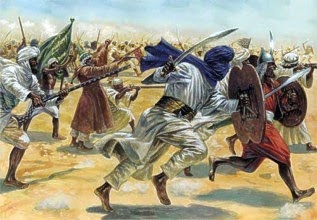12 amazing WW1 facts that you probably don't know
source = www.bbc.co.uk
World War One often conjures up images of a horrific bloodbath fought in the trenches of the Western Front. While this certainly captures some of the reality, did you know that the war spread as far as China? Or that it was fought by servicemen from Asia, North America, the Caribbean, Australasia and Africa?
Here are 12 surprising facts about World War One that you probably didn't know.
1. An explosion on the battlefield in France was heard in London
While the war raged on in the mud and trenches, a very different war was taking place beneath the soldiers' feet. A group of miners, operating in total secrecy, dug tunnels up to 100ft underground, to plant and detonate mines beneath the enemy's trenches. Their biggest success was at Messines Ridge in Belgium where over 900,000lbs of explosives were simultaneously detonated in 19 underground tunnels. Much of the German front line was destroyed, and the explosions were heard 140 miles away by the British prime minister in Downing St.
2. Journalists faced execution
A handful of journalists risked their lives to report on the realities of war. As the Government sought to control the flow of information from the frontline at the start of the war, journalists were banned. Reporting on the conflict was, in the opinion of the War Office, helping the enemy. If caught, they faced the death penalty.
3. 12 million letters were delivered to the front every week
Astonishingly, it only took two days for a letter from Britain to reach the front in France. The journey began at a purpose-built sorting depot in Regent's Park before being shipped to the trenches. By the end of the war, two billion letters and 114 million parcels had had been delivered.
4. War work turned some women's skin yellow
When a generation of men went to fight the war, more than a million women took their place in the workforce. They worked long hours, often in poor conditions and with dangerous chemicals. The so-called 'canaries' were women who worked with TNT, which gave them toxic jaundice and turned their skin yellow.
5. WW1 sparked the invention of plastic surgery
Shrapnel was the cause of many facial injuries in WW1 and unlike the straight-line wounds inflicted by bullets, the twisted metal shards produced from a shrapnel blast could easily rip a face off. Horrified by the injuries he saw, surgeon Harold Gillies, took on the task of helping victims and pioneered early techniques of facial reconstruction in the process.
6. Wilfred Owen was unknown at the end of the war
Wilfred Owen is one of the best know poets of the WW1, but when he died on the frontline, just a week before the end of the war, he was relatively unknown. At the time, his view of the war as one of pity and horror was in the minority. It wasn't until the 1960s that a literary elite decided this was the most authentic view of the conflict because it chimed with their own anti-war feelings. This resulted in the publication of two key war poetry anthologies which heavily featured Owen.
7. The youngest British soldier was 12 years old
Sidney Lewis was just 12 years old when he lied about his age and joined the army during World War One. He was one of thousands of eager underage boys who enlisted and ended up fighting alongside their adult counterparts on the front. Some were motivated by patriotism, but for others it was an escape from their dreary lives.
8. WW1 nearly caused a financial meltdown in Britain
At the turn of the 20th century, Britain was an economic superpower, but the world's first global war would cost more than any that had gone before. For example, the cost of bullets fired in one 24 hour period in September 1918 was nearly four million pounds.
9. Blood banks were developed during WW1
The British Army began the routine use of blood transfusion in treating wounded soldiers. Blood was transferred directly from one person to another. A US Army doctor, Captain Oswald Robertson, established the first blood bank on the Western Front in 1917, using sodium citrate to prevent the blood from coagulating and becoming unusable. Blood was kept on ice for up to 28 days and then transported to casualty clearing stations for use in life-saving surgery where it was needed most.
10. Colourful makeovers meant WW1 ships hid in plain sight
It was crucial to protect the merchant ships carrying the food and military supplies to the front from enemy torpedoes. Norman Wilkinson, an artist and Royal Navy volunteer came up with the idea of covering ships in bold shapes and violent contrasts of colour. The complete opposite of normal camouflage, dazzle camouflage was supposed to confuse the enemy rather than conceal the ships.
11. 9 out of 10 soldiers survived the trenches
Being in the firing line was rare for a British soldier. They constantly moved around the trench system - meaning more often than not they were kept from the dangers of enemy fire. The more typical experience for the British Tommy would have been a life of boredom and regular routine.
12. Generals were banned from going over the top
The stereotype is that the ordinary soldiers of WW1 were lions led by donkeys - the donkeys being incompetent generals who sat out the war in comfort while thousands died unnecessary deaths. In fact, so many of the generals wanted to be closer to the fighting they had to be banned from going over the top because they kept getting killed. The experience required to be a general was too significant to lose.

mrsghillman_cropped.jpg)









Comments
Post a Comment